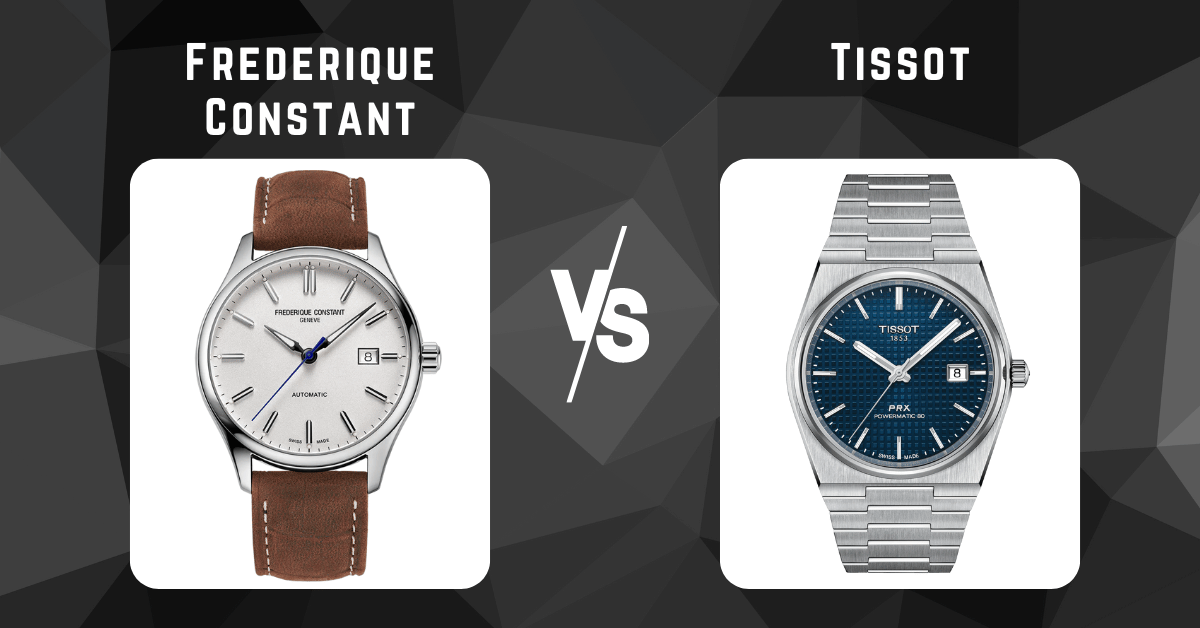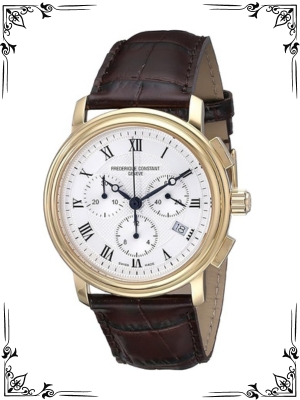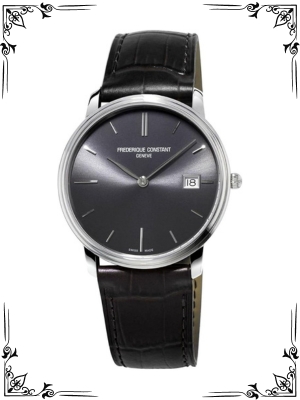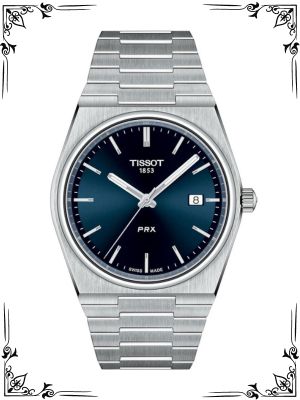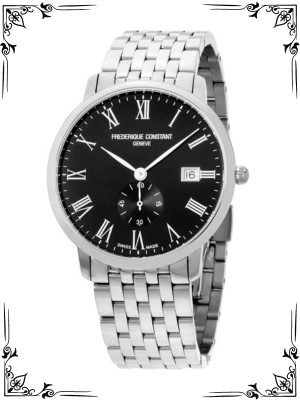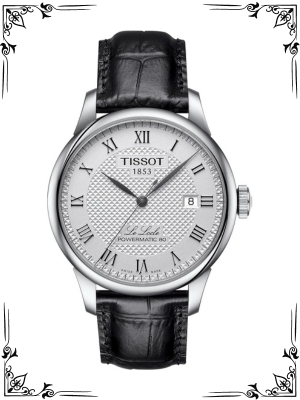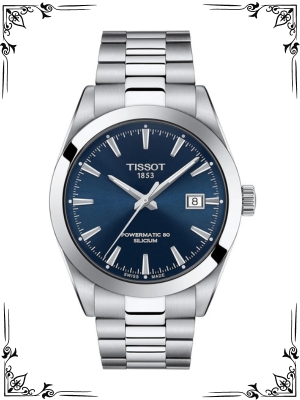The world of luxury watches boasts a vast ocean of options, and navigating these waters can be daunting, especially when faced with established brands like Frederique Constant and Tissot.
Both offer Swiss-made timepieces known for their quality and style, but subtle distinctions might influence your decision. Here’s a comprehensive dive into these two esteemed brands to help you find your perfect wrist companion.
History
Frederique Constant: Established in 1988 in Geneva, Frederique Constant boasts a rich, yet relatively young, legacy. Their focus from the outset has been on creating high-quality, classically inspired watches with a touch of luxury.
They’ve established a reputation for innovative complications like their Heart Beat watches, featuring an open dial showcasing the balance wheel in motion. Their commitment to in-house movement development further cements their position as a rising star in the luxury watchmaking world.
Tissot: Founded in 1853 in Le Locle, Switzerland, Tissot boasts a much longer and storied history. They’ve witnessed and contributed to the evolution of watchmaking for over 160 years.
Their dedication to innovation is evident in their early adoption of pocket watches during the Industrial Revolution and their pioneering use of plastic in the 1970s. Today, Tissot is known for its reliable and stylish timepieces, offering exceptional value within the Swiss-made watch category.
Technical Breakdown
Now that we’ve explored their histories, let’s delve into the technical aspects that differentiate Frederique Constant and Tissot’s timepieces. Here’s a breakdown of the key areas:
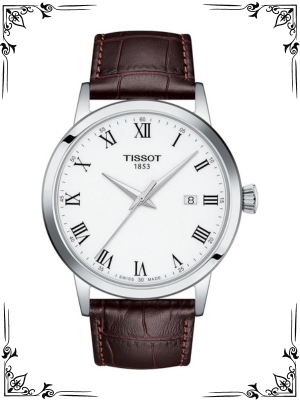
Movement:
Frederique Constant: This brand takes pride in its in-house movement development. They offer a range of calibers, with some featuring complications like perpetual calendars and tourbillons. These movements showcase their commitment to high-end watchmaking.
However, some models also utilize ETA-based movements, which are reliable and well-regarded, but less exclusive.
Tissot: While Tissot doesn’t manufacture movements in-house, they primarily rely on highly regarded ETA calibers. These movements are known for their accuracy, durability, and widespread availability.
Tissot also utilizes the innovative Powermatic 80 movement, offering an impressive power reserve of up to 80 hours. This extended power reserve ensures your watch keeps running even if you don’t wear it for a few days.
Table: Movement Comparison
| Feature | Frederique Constant | Tissot |
|---|---|---|
| Movement Type | In-house & ETA-based | Primarily ETA-based |
| Example Movements | Caliber FC-303, FC-710 | Powermatic 80, ETA 2824-2 |
| Focus | In-house complications | Reliability & Power Reserve |
Materials and Construction:
Frederique Constant: Luxury reigns supreme in Frederique Constant’s material choices. They primarily utilize precious metals like 18k rose gold, yellow gold, and white gold for their cases and bracelets. This focus on high-end materials contributes to the overall weight, feel, and value of their timepieces. They also offer some models in high-quality stainless steel.
Tissot: This brand prioritizes accessibility by offering a wider range of materials. Their core collection features 316L stainless steel, known for its durability and resistance to corrosion. This makes their watches more practical for everyday wear.
Tissot also offers some models with gold plating or PVD coatings for a touch of luxury without the hefty price tag of solid gold.
Table: Material Comparison
| Feature | Frederique Constant | Tissot |
|---|---|---|
| Case Materials | 18k gold, Stainless Steel | Stainless Steel, Gold Plating |
| Bracelet Materials | 18k gold, Stainless Steel | Stainless Steel, Leather |
Functions and Features
Frederique Constant: The focus here leans towards classic complications. You’ll find timepieces with features like perpetual calendars, moon phases, and power reserve indicators. Some models offer more basic functionalities like date and day displays.
Tissot: Tissot prioritizes practicality and functionality. Their core collection features time and date displays with some models offering additional features like chronographs, GMT functionality, and water resistance suitable for swimming and diving.
Their innovative Powermatic 80 movement, with its extended power reserve, is a noteworthy feature in many Tissot watches.
Remember, the specific movement, materials, and features will vary depending on the model you choose within each brand. Always refer to the manufacturer’s specifications for detailed information on a particular watch.
Design and Aesthetics
While technical specifications are important, a watch’s visual appeal plays a significant role in your decision. Here’s a breakdown of the design elements that differentiate Frederique Constant and Tissot:
Dial Design
Frederique Constant: These watches embrace a classic and elegant aesthetic. The dials often feature Roman numerals, intricate hands, and a clean layout that prioritizes readability. Some models showcase open dials with visible balance wheels, adding a touch of mechanical intrigue.
Tissot: Tissot offers a wider range of dial designs, catering to diverse tastes. You’ll find classic options with clean layouts, sporty chronographs with subdials, and modern interpretations with bold colors and textures. While some Tissot dials might appear busier than Frederique Constant’s, they prioritize functionality and legibility for specific purposes.
Case and Bracelet
Frederique Constant: The cases on these watches are typically crafted from the chosen metal, be it gold or stainless steel. They often feature polished finishes and classic round or tonneau-shaped designs. The bracelets mirror the case material, offering a seamless look and a luxurious feel. Some models utilize high-quality leather straps for a touch of sophistication.
Tissot: Tissot offers more variety in case and bracelet materials. Their core collection’s stainless steel cases showcase polished finishes and classic shapes similar to Frederique Constant. However, Tissot also ventures into sportier designs with integrated bracelets and PVD coatings for a more contemporary look.
Leather straps in various colors and textures are also prevalent, allowing for greater personalization.
Brand Image
Frederique Constant: This brand exudes an aura of sophistication and heritage. Their focus on in-house complications and precious metals positions them as a rising star in the luxury watchmaking world. Owning a Frederique Constant watch signifies an appreciation for traditional watchmaking techniques and timeless elegance.
Tissot: Tissot embodies the Swiss watchmaking tradition with a touch of modern flair. Their focus on accessibility and reliable movements makes them a popular choice for those seeking a well-made, stylish timepiece without a hefty price tag. Owning a Tissot watch signifies an appreciation for quality and functionality at a fair price.
Ultimately, the design choice comes down to personal preference. Do you crave the classic elegance of Frederique Constant, or are you drawn to the wider design options and practicality offered by Tissot? Consider your style and desired aesthetic when making your decision.
User Feedback
Real-world experiences from watch enthusiasts can be invaluable when choosing between Frederique Constant and Tissot. Here’s a glimpse into what users have to say about each brand:
Frederique Constant:
Pros:
- Users praise the exquisite craftsmanship and luxurious feel of Frederique Constant watches.
- The in-house complications and classic design are appreciated by those who value traditional watchmaking.
- The superior comfort of the metal bracelets and high-quality leather straps is frequently mentioned.
Cons:
- The higher price point can be a deterrent for some users seeking a more affordable option.
- Some users find the designs a bit too traditional and might prefer a more modern aesthetic.
- Since some models utilize ETA movements, a few users feel they don’t justify the price tag compared to Tissot’s offerings.
Tissot:
Pros:
- Users rave about the excellent value proposition Tissot offers, with reliable functionality at an attractive price.
- The Powermatic 80 movement’s impressive power reserve is a major selling point for many.
- The wide range of styles, from classic to sporty, caters to diverse tastes and preferences.
Cons:
- Some users might find the predominance of stainless steel less luxurious compared to Frederique Constant’s precious metals.
- The simpler movements in some models might not appeal to those who value in-house complications.
- A few users report that the bracelets on some models might feel a bit less substantial compared to Frederique Constant’s offerings.
Common Problems
Both Frederique Constant and Tissot are known for their reliability. However, here are a few potential issues to be aware of:
Battery Replacement: While both brands utilize batteries with long lifespans, replacing them eventually becomes necessary. However, it’s a relatively simple process, usually handled by a watchmaker.
Scratches: Despite their durability, scratches can develop on the cases and bracelets of both brands with regular wear and tear. Investing in a sapphire crystal ensures better scratch resistance.
Water Resistance: Water resistance ratings vary depending on the model. Always check the specific rating before swimming or diving with your watch. Following proper care guidelines is crucial for maintaining your watch’s longevity.
The Final Lap
So, which brand emerges victorious? Here’s a breakdown to help you decide:
Choose Frederique Constant if:
- You prioritize in-house complications and the prestige of owning a watch with a touch of luxury.
- You appreciate classic and elegant designs with precious metals like gold.
- You’re willing to invest in a watch that embodies traditional watchmaking expertise.
Choose Tissot if:
- You seek a reliable and stylish Swiss-made timepiece at an attractive price point.
- You value the extended power reserve offered by the Powermatic 80 movement.
- You prefer a wider range of design options, from classic to sporty, to suit your style.
Remember, there’s no single “best” brand. The ideal choice depends on your budget, style preferences, and desired features. Consider the factors discussed above, and don’t hesitate to visit a watch store to try on both the Frederique Constant and Tissot models. See which one feels more comfortable on your wrist and resonates most with your personal taste.
Conclusion
Frederique Constant and Tissot both offer exceptional timepieces, each catering to a distinct audience. Frederique Constant caters to those who appreciate the finer details of luxury watchmaking, while Tissot offers a compelling blend of accessibility and functionality.
No matter your choice, you’re guaranteed a Swiss-made watch that will keep you on time for years to come. So, embark on your watch-buying journey with confidence, knowing you’ll find the perfect timepiece to complement your style and personality.
FAQs
Are Frederique Constant watches worth the money?
For those who value in-house complications, precious metals, and the prestige of a rising luxury brand, Frederique Constant watches can be worth the investment. However, some models utilize ETA movements, which might lead some to question the price point compared to Tissot’s offerings.
Are Tissot watches good quality?
Tissot is known for its excellent value proposition. They utilize reliable ETA movements and the innovative Powermatic 80 movement, ensuring exceptional quality and functionality at an attractive price point. The brand utilizes high-quality materials like 316L stainless steel, and its watches are renowned for their durability.
Which brand offers better customer service?
Both Frederique Constant and Tissot have established global networks of authorized retailers and service centers. Generally, you can expect excellent customer service from either brand.
However, due to the potentially higher price point of Frederique Constant watches, some users might report a more personalized customer service experience with that brand.
Is it better to buy a pre-owned Frederique Constant or Tissot watch?
Purchasing a pre-owned watch can be a great way to save money. However, it’s crucial to ensure authenticity and proper functionality. Here are some tips:
- Buy from reputable pre-owned watch sellers: Look for established dealers with a proven track record and positive customer reviews.
- Request service history and documentation: A genuine pre-owned watch should come with service records or certificates of authenticity.
- Have the watch inspected by a professional watchmaker: Before finalizing the purchase, have the watch inspected to ensure it’s functioning correctly and is in the condition described by the seller.
What are some other Swiss watch brands to consider?
The world of Swiss watches is vast, offering options for every taste and budget. Here are a few other popular brands to consider:
- Longines: Another brand known for its heritage and excellent value proposition within the Swiss-made watch category.
- TAG Heuer: A brand associated with luxury sports watches and motorsports heritage.
- Oris: A brand known for its innovative spirit and commitment to mechanical watchmaking.
- Raymond Weil: A brand offering a blend of classic designs and modern features at accessible price points.
Ultimately, the best brand for you depends on your individual preferences and budget. Research different brands, explore their collections, and consider trying on watches in person before making your final decision.
By considering the information in this comprehensive guide and exploring the FAQs, you’re well-equipped to choose the perfect Swiss watch brand, whether it’s the luxurious touch of Frederique Constant, the accessible quality of Tissot, or another brand that resonates with your style.
Now, embark on your watch-buying journey with confidence, knowing you’ll find the ideal timepiece to tell your story and keep you on time for years to come!

